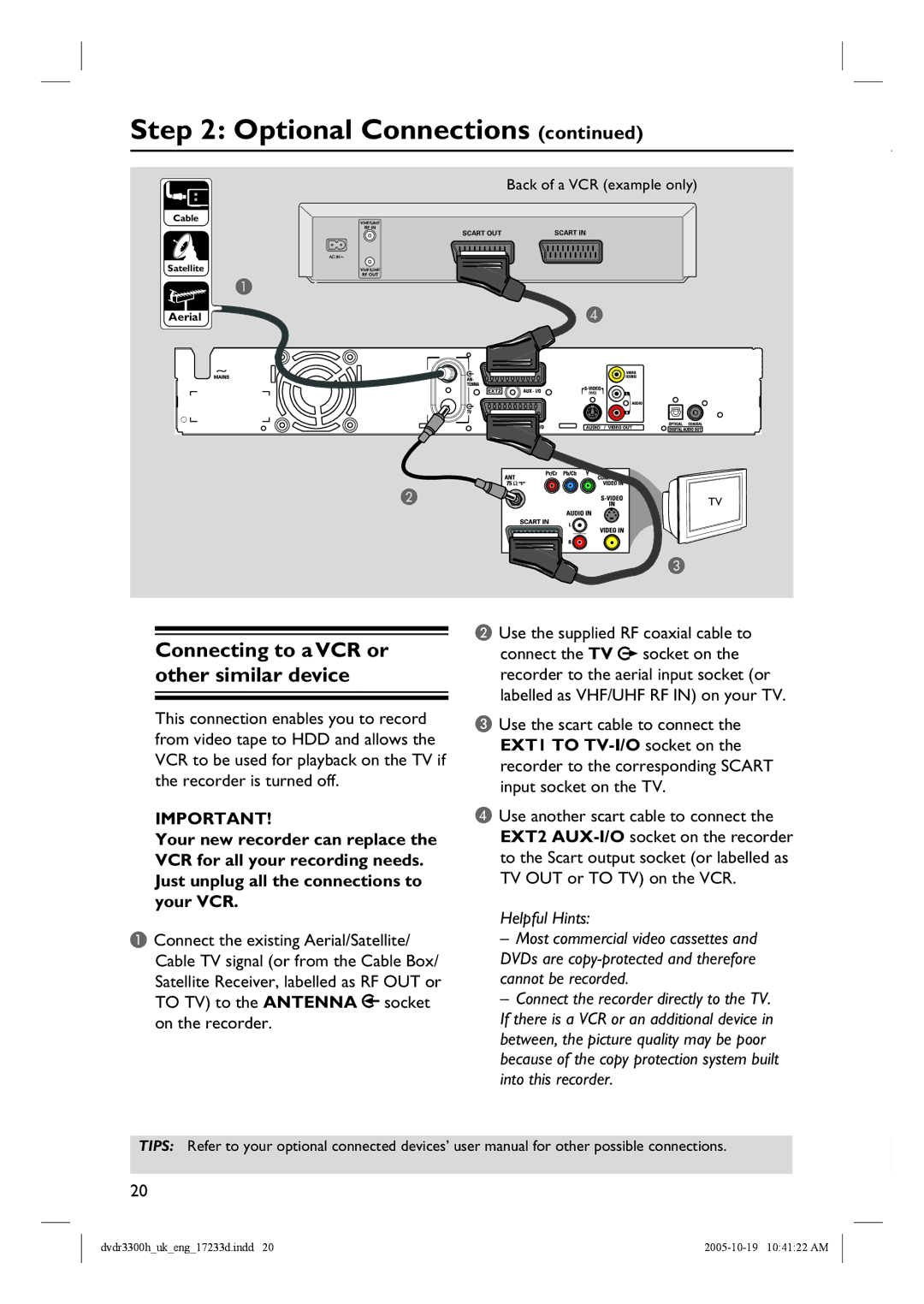
Step 2: Optional Connections (continued)
|
| Back of a VCR (example only) |
Cable | VHF/UHF |
|
| RF IN | SCART IN |
| SCART OUT | |
Satellite | VHF/UHF |
|
| RF OUT |
|
| A |
|
Aerialntenna |
| D |
B | TV |
C
Connecting to a VCR or other similar device
This connection enables you to record from video tape to HDD and allows the VCR to be used for playback on the TV if the recorder is turned off.
IMPORTANT!
Your new recorder can replace the VCR for all your recording needs. Just unplug all the connections to your VCR.
AConnect the existing Aerial/Satellite/ Cable TV signal (or from the Cable Box/ Satellite Receiver, labelled as RF OUT or TO TV) to the ANTENNA ![]() socket on the recorder.
socket on the recorder.
BUse the supplied RF coaxial cable to connect the TV ![]() socket on the recorder to the aerial input socket (or labelled as VHF/UHF RF IN) on your TV.
socket on the recorder to the aerial input socket (or labelled as VHF/UHF RF IN) on your TV.
CUse the scart cable to connect the EXT1 TO
DUse another scart cable to connect the EXT2
Helpful Hints:
–Most commercial video cassettes and DVDs are
–Connect the recorder directly to the TV.
If there is a VCR or an additional device in between, the picture quality may be poor because of the copy protection system built into this recorder.
TIPS: Refer to your optional connected devices’ user manual for other possible connections.
20
dvdr3300h_uk_eng_17233d.indd 20 |
